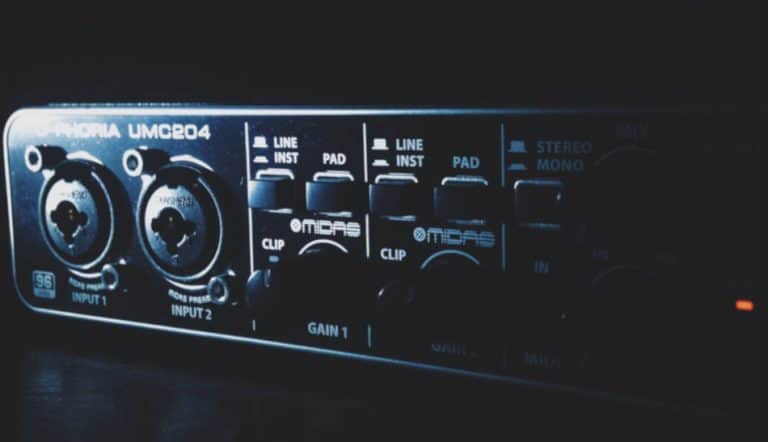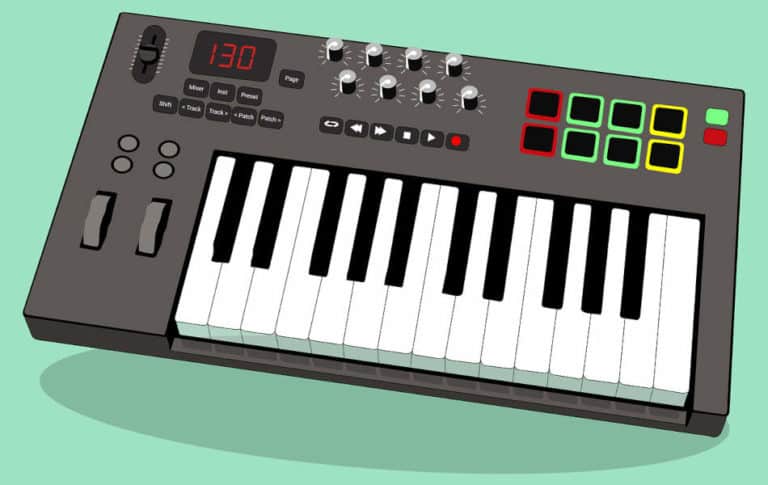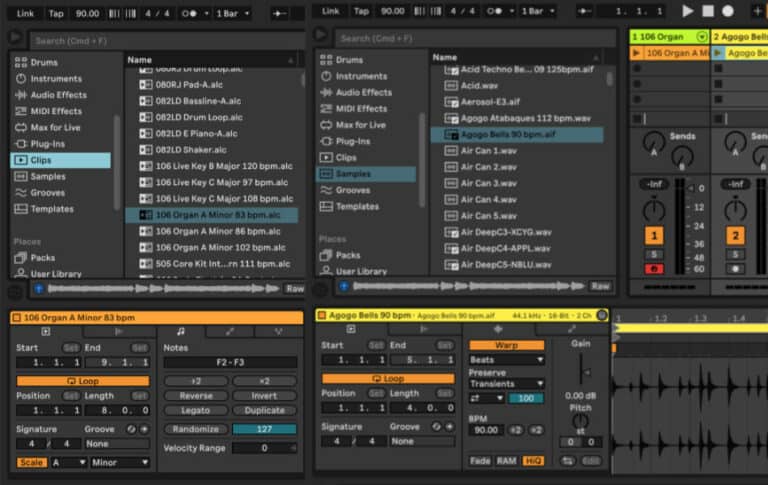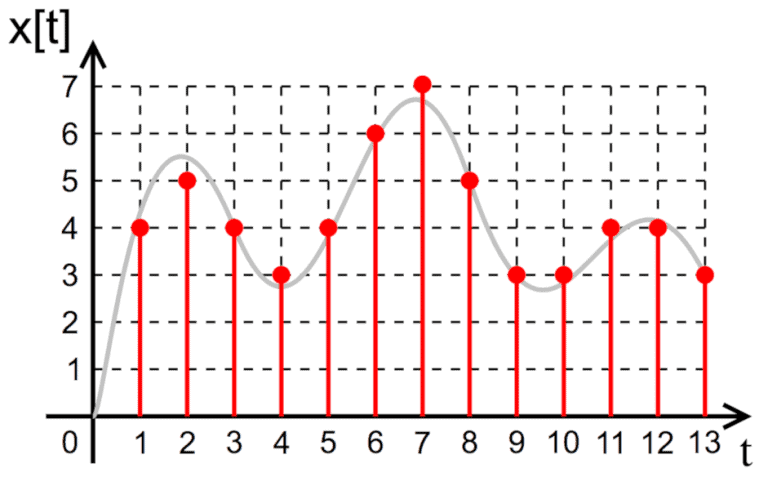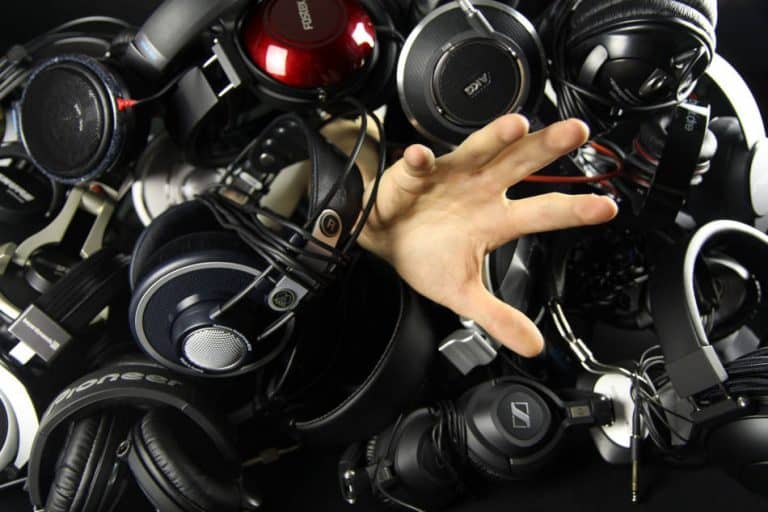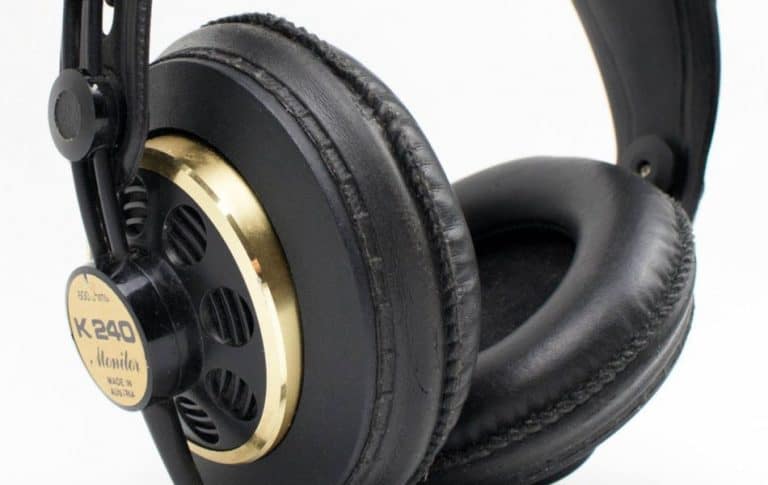Do You Need a Pop Filter to Record Vocals?

So, you’re all ready to start recording your vocals.
The microphone is connected to the audio interface and it’s at the right height on its stand. The area behind the mic is lined with absorbent material to deaden sound reflections.
But wait, what about the pop filter? You tighten the bolt to attach it to the microphone stand, but it won’t stay in position. Then you finally get it set up in front of the mic (and it looks terrible).
The vocal recording starts, but the vocalist’s mouth is right up against the pop filter and they push it out of position, and they are no longer singing into the microphone. Plus the movement of the pop filter is introducing noise.
So you start to wonder… Do you need a pop filter to record vocals? Is there some way to do without it?
The account above is from my own experience with recording vocals, so I wanted to explore why we need pop filters when recording vocals and if there’s some way to avoid these problems.
What Is a Pop Filter?
You may have heard alternative names used for a pop filter, such as pop shield, pop screen, windshield or windscreen.
Whatever name is used, a pop filter is a screen that is placed between the mouth of the vocalist and the microphone.
A pop filter is a simple yet essential piece of equipment when recording vocals. It helps to reduce popping sounds produced when singing words containing p and b sounds, it helps to protect the microphone, and can enhance the sound of the vocal performance.
Pop filters can be made of different materials like nylon or metal.
Nylon pop filters are the most common (and least expensive) type and consist of a circular frame covered with a thin layer of nylon mesh. Metal pop filters are a little more rigid and are sometimes fitted directly onto the microphone.
The Purpose of Pop Filters
Despite my earlier complaints about pop filters, they can help you achieve better results when recording vocals.
We’ll look at how pop filters can help to prevent plosives, improve the sound of the vocal recording, and protect your microphone.
Preventing Plosives
Plosives are consonant sounds that are produced when the mouth is closed off by the lips, tongue or throat so that pressure builds up, and that pressure is released when lips, tongue or throat open to release the burst of air.
I found one of the best explanations of plosives on a website for Spanish speakers learning english.
K and G sounds are produced when closing and opening the throat produces the burst of air.
T and D sounds are produced when the tongue allowing the pressure release causes the burst of air pressure.
P and B sounds result from the lips causing the build up of air pressure that is released when the lips open.
It’s this burst of air that produces the unwanted popping sound in a vocal recording.
If you tried making these sounds (like I just did), you will see that the burst of air causing K, G, T and D sounds could produce popping sounds as the hit the microphone.
However, the worst offenders are definitely the P and B sounds.
P and B consonants are produced as the build up of air pressure behind the lips is released, and this happens very close to the microphone. So the popping sound resulting from this blast of air is very noticeable and quite unpleasant.
Pop filters are able to reduce, or even eliminate, these popping sounds produced by plosives in the vocal performance.
The pop filter membrane allows the desirable vocal sound waves to pass through, but absorbs the (ex)plosive burst of air pressure that would produce popping as it hits the microphone.
If you have every tried to record a vocal performance (or even someone speaking) without using a pop filter, you will know how important this is.
Protecting the Microphone
Another reason that you should use a pop filter is that it protects your microphone.
Placing a pop filter between the mouth of the vocalist and the microphone helps to prevent moisture from saliva and the vocalist’s breath from hitting the microphone.
This can help to maintain your microphone and keep it functioning well for as long as possible.
You should clean your microphone after use (or at least quite frequently) but it’s better to avoid issues caused by moisture than to try to fix them once they have happened.
Something to remember is that microphones are expensive but pop filters are (usually) cheap.
Microphone Hygiene
Another issue relating to moisture from breath and saliva hitting the microphone relates to hygiene and infection control.
The Covid pandemic has made us all much more aware of the ways we can catch respiratory infections, and singing into a microphone used by several different vocalists could be one of them.
It’s not very nice to think about it, but the risks are real.
Professional (and amateur) vocalists are constantly worried about catching colds and getting sore throats, since these infections can have a huge impact on their ability to work.
Pop filters can catch the moisture that might contain infection-causing bugs before it can reach the microphone.
So, once you have finished the recording session with your vocalist you could throw the pop filter away and use a new one for the next session.
If you are on a tight budget you could probably sterilise the pop filter in boiling water, but it might not survive the process (depending on what type of filter it is).
Improving Vocal Sound Quality
The positioning of the pop filter between the mouth of the vocalist and the microphone can help to improve the quality of the vocal performance.
The pop filter can help the vocalist to maintain an optimum distance away from the microphone by acting as a surface their face can almost touch, so they are not too close or too far away.
Maintaining a consistent distance between the vocalist and microphone helps to obtain a vocal recording where the levels are as even as possible. This can be very difficult if the vocalist moves back and forth, increasing and decreasing the distance, as they sing.
Even if the vocalist remains the same distance from the microphone throughout the performance, it’s important that it’s the right distance.
If the vocalist is too close to the microphone, this can result in problems caused by the proximity effect.
The proximity effect is where low frequency sounds in the vocal become exaggerated as the vocalist gets too close to the microphone. This can make the vocal performance sound quite boomy.
The opposite happens when the vocalist is too far away, with the recorded performance sounding quite thin and weak.
This means you have to position the pop shield at the correct distance from the microphone to get the best sounding vocal recording.
What distance is that? It depends on the vocalist.
If the vocalist likes to get close up to the pop shield you will need to place it further from the microphone. If they stay back a little from the pop shield then you will probably want to place it a little closer to the microphone.
By monitoring the vocal before you start recording you should be able to work out what works best for the performance you want to record.
Ultimately, incorporating a pop filter into your recording setup will result in cleaner, more professional-sounding vocals.
Types of Pop Filters
The main job that a pop filter needs to do is let all of the vocal pass through to reach the microphone, except the bursts of air pressure that cause unpleasant popping sounds.
To do this, It needs to be made of a material that doesn’t absorb the vocal sound waves, but catches the burst of air pressure that cause the popping.
Pop filters are usually made of some sort of mesh-like material. The most common types are made from nylon mesh, metal mesh or sometimes a foam ball that covers the microphone.
Nylon Mesh Pop Filters
Nylon mesh pop filters are a very popular choice for recording vocals. They are made from thin, woven nylon material that is stretched over a circular frame.
The filter frame is usually attached to a flexible, twistable goose-neck, with a bolt-bracket at the other end so that you can fix it to the microphone stand. Once fixed to the stand, you can adjust the goose-neck to position the pop filter in front of the microphone (where it will hopefully stay in place).
Nylon pop filters are affordable and easy to clean (or replace), which makes them a popular option for most recording setups. You can see an example of this type of pop filter on Amazon.
If you want to explore really low cost options, you can find videos on YouTube showing you how to make a nylon pop filter from some stocking material, a wire coat-hanger and some flexible tubing.
You can shape the coat-hanger into a circular frame, stretch the stocking material over it, and fasten it using the flexible tubing. It doesn’t look great but it will do the job.
Metal Mesh Pop Filters
If you’re looking for a more durable option, you could consider using a metal mesh pop filter. Metal mesh pop filters are more robust and often last longer than their nylon counterparts.
Additionally, some metal pop filters may have unique designs, such as angled slots, that enhance their filtering capabilities.
It is worth noting that while metal mesh pop filters may be slightly more expensive than nylon mesh options, their durability and performance can often justify the price difference. You can see an example at Amazon.
Foam Ball Pop Filters
These filters are made from a foam ball that fits directly over the head of your microphone. Normally they are made of open-cell polyurethane foam.
Foam ball pop filters are easy to attach and remove from your microphone, plus you don’t have to worry about correct positioning of the filter and the possibility of it moving while recording the vocal.
However, while foam ball pop filters are able to reduce popping from plosive sounds, they are not usually as effective as nylon or metal mesh pop filters.
The least effective foam ball pop filters are the ones that fit neatly over the microphone head, and are in close contact with it. This seems to allow more of the plosive bursts of air pass through so that the pops are heard.
Foam ball filters that provide a little bit of distance between the filter and the microphone head seem to be more effective for filtering out the popping sound.
Although the foam material itself seems to be less effective at reducing pops than the other options, they can be more convenient and quicker to set up that the other types and are definitely worth trying out. You can see an example of this type of microphone cover on Amazon.
Integrated Surround Pop Filters
You might also have a look at pop filters that are integrated foam sponge case.
The sponge case completely surround the microphone, and the pop filter is fitted into an opening in the case
The pop filter works exactly as outlined above, while the sponge case acts as an isolation shield (like a vocal booth) to help prevent sound reflections from surfaces behind the microphone.
Alternative Solutions
There are some other options for avoiding popping sounds in your vocal recordings without using an add-on pop filter. Microphones with built-in pop filters are available, and it’s possible to reduce plosive popping sounds using microphone technique.
Built-In Pop Filters
Some microphones come with a built-in pop filter, which helps to avoid the need for setting one up separately.
Most commonly, it’s dynamic microphones that have built in pop filters. These microphones are used more for live performance than recording vocals in a studio, so having a built in pop filter makes them more practical for this purpose. You can read more about dynamic microphones and what they can be used for in another article on our website.
The type of microphone most often used for recording a vocal performance in a studio is a condenser microphone.
Condenser microphones don’t usually come with a built-in pop filter since they are designed for use in a recording studio. They are normally mounted on a static mic stand, so it’s expected that a separate pop filter will be set up.
You can read about types of microphone for home studio recording in another article on our website.
One disadvantage of a built-in pop filter is that it can’t be removed to be cleaned or replaced by another filter. We looked at microphone hygiene earlier, and this could be a problem if different vocalists are going to be using the microphone.
Microphone Technique
Another alternative to a pop filter is to use microphone technique to avoid, or reduce, plosive popping sounds in the vocal recording.
This requires careful use of the microphone when recording vocals, and being aware of positioning and the way the breath and vocals impact the mic. For example, the vocalist can try to direct their breath away from the mic by singing or speaking slightly off-axis.
This can help to reduce plosive pops in the vocal recording. However, considering how simple and inexpensive a pop filter can be, it’s probably easier to use one for the best results.
So, Do You Need a Pop Filter to Record Vocals?
You can record vocals without a pop filter, but you are much more likely to get good results if you use one.
A pop filter will eliminate, or at least dramatically reduce, unpleasant popping sounds caused by plosives in the lyrics. The filter can help to keep the vocalist at the right distance from the microphone, and reduce the risk of moisture damage to the microphone.
A very basic pop filter costing around $10 or less is all you need for great results, so I think the answer to the question is definitely yes.
